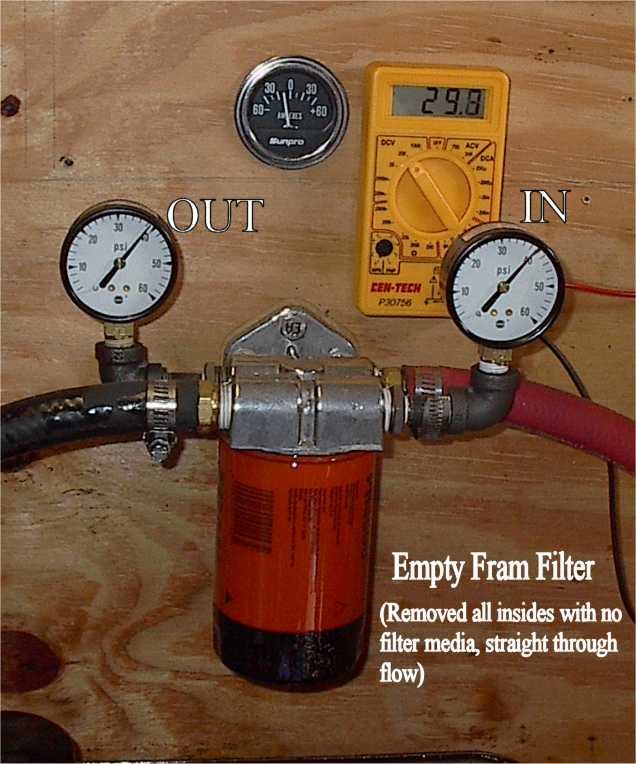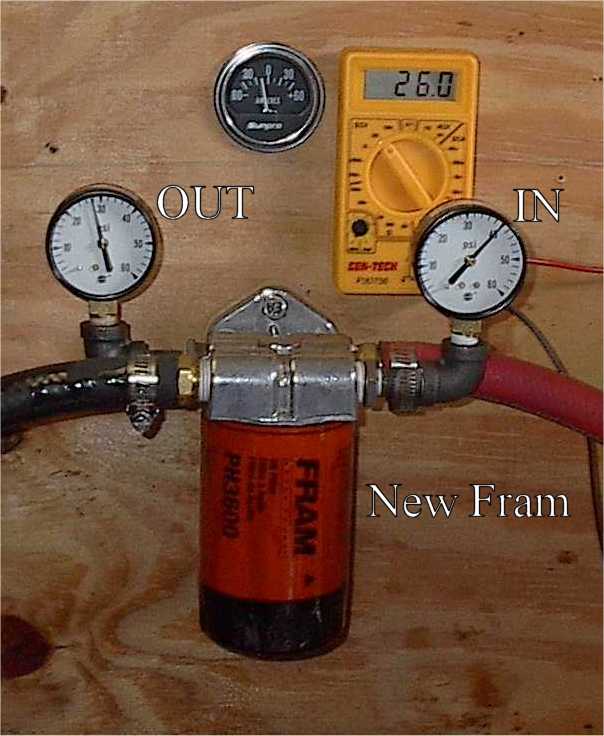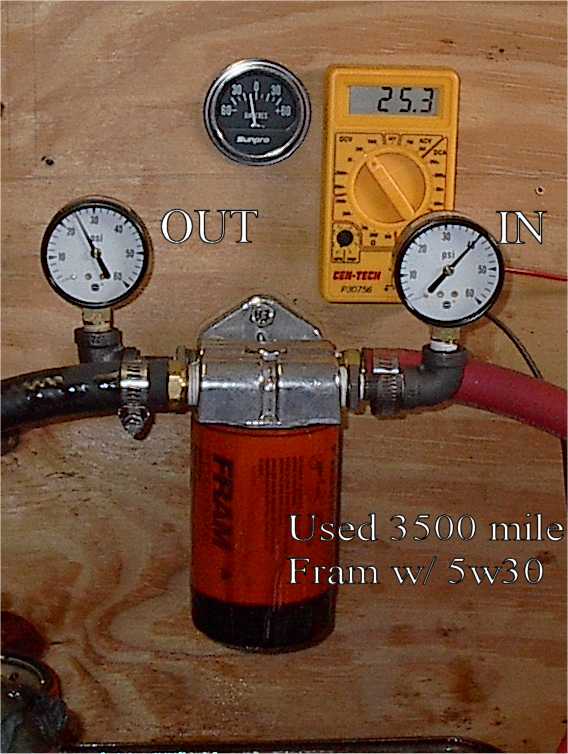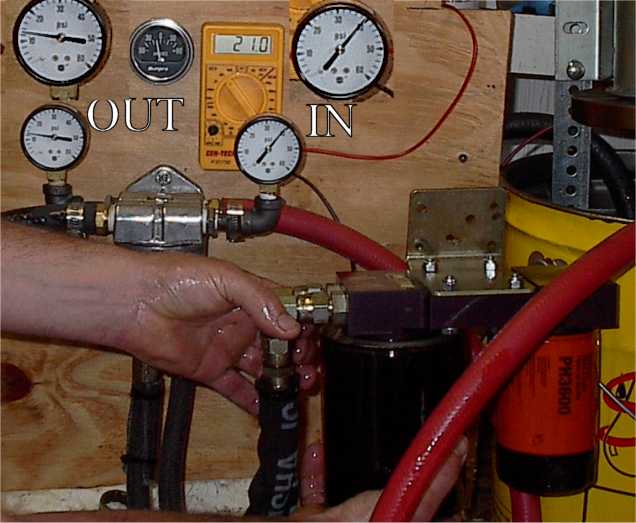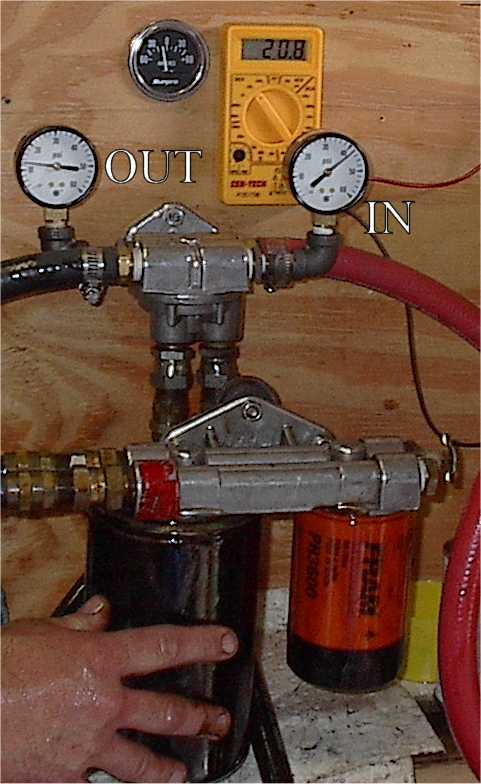Rugerman(mark) came down from his yankee town in PA, just to get me off my butt and do some more filter testing.. NOT.. but we did have a bunch of fun and he did help with the oil filter testing that we are now going to show.
First, Let me explain some details as I stated earlier that we were re doing the filter tester.
We changed out both pressure gauges from 100psi to 60lbs.
We added an AMP gauge with the motor
We added a DC Volt meter with the motor
I rebuilt the P/s to carry a much higher current and with Mola's added Cap's it helped stabilize the motors rpm.
Now, with all those changes to the unit, we decided to start over again. But first, I thought we'd use the fram filter as a test.
Here was a fram dummy filter which I stripped out all the guts so to show full unrestricted flow on this machine.
Now, with a new fram filter with the guts in...
Ok, one last fram...
This one came off my car after having 3500 miles on it. Figured this might show just how much restriction a filter has accumilated with only 3500 miles for those that like to run extended drains.
Now at this point, I have no explaination as to why these filters do not match what we initally did other than the fact we may not have had enough current to run the motor and or a combination of the fact the oil was in the 70deg mark back then and now it is 84's in these. I believe the latter may expain most of the differences but again, I'm just showing you what I have.
Now, that we established the difference here, I'm going to show you something I was quite taken back with on BYPASS FILTER SETUPS...
We had two people send us bypass systems. We used our new fram filter, knowing what the exact pressure drop was and put that on the full flow side of the bypass system. And a new bypass filter that they sent with it. Here's what we saw.
Now, thinking we had a bad one, we brought the other one out and did the same thing... This one, we again used our new fram filter but left the used bypass filter on there...
More to come
[ May 21, 2003, 02:08 PM: Message edited by: BOBISTHEOILGUY ]

